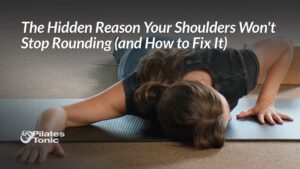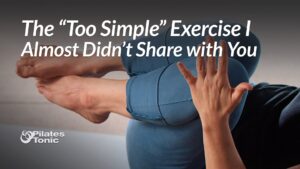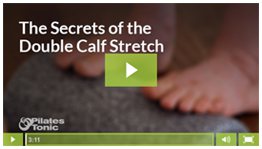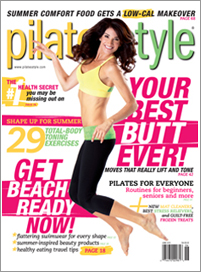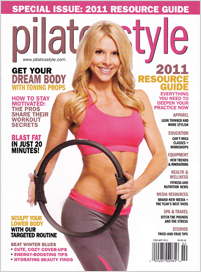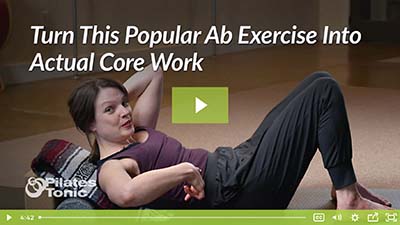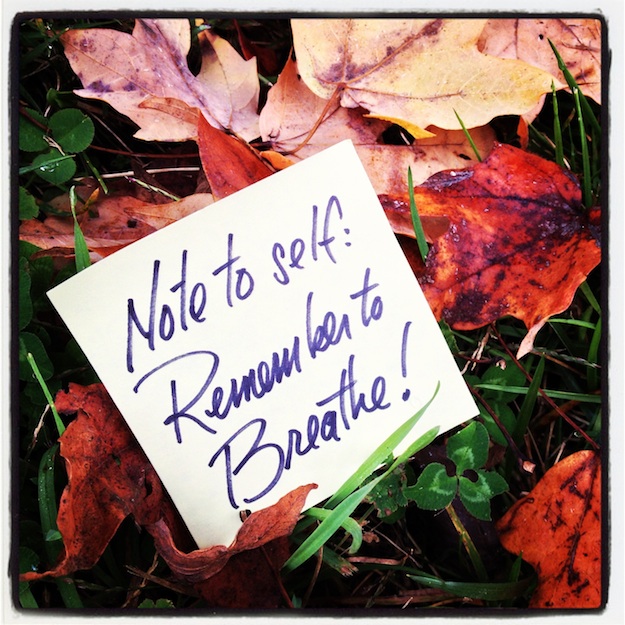
Recently I had the pleasure of spending time with my grandmother. She's 85 and in great health. Like me, she has scoliosis and sometimes suffers from back pain that gets pretty severe.
We were sitting outside on a beautiful day. The subject of back pain and stress came up. She looked at me and said, “You know, if people could learn how to take full breaths it would really change how they feel.” She went on to explain to me how to breathe more fully and how it has helped her.
Unbeknownst to her, helping people discover the value and benefits of breathing well has been a huge focus for me this year. I was so pleasantly surprised to have this conversation with her, I couldn't stop smiling!
Our conversation was a confirmation to me that I am on the right track with the power of the breath to heal and reverse stressful mental energy and I’m more inspired than ever to write about it.
If there was one thing you could do, on your own, that required no extra props, was free and also helped with:
- stability of your spine
- flexibility of your spine
- decreased back and neck pain
- lowering high blood pressure
- helped lower stress levels and decrease anxiety
Would you do it?
I've mentioned the importance of the breath before. Lately, I'm understanding more firsthand in my own body, as well as my with my clients, just how powerful the breath truly is.
Because mindful, full breathing seems so simple, the benefits are easily discounted. After all, we breathe automatically, don't we? But just because we breathe automatically doesn't mean we are doing it well, or optimally.
People search for the perfect stretch, perfect exercise, magic pill, and even surgery to help their backs feel better. But what if the answer really was as simple as breathing better?
Poor breathing is the real source of many of the back issues people suffer today. Addressing a problem at its source, instead of addressing a symptom, is going to result in a much higher probability of success that creates lasting results.
The Diaphragm
The diaphragm is your breathing muscle. It’s a dome shaped muscle (similar to a jellyfish in shape) that forms the floor of your thorax. It has deep muscle fibers that reach out and insert into the tips of the 11th and 12th ribs and has tendon-like extensions into the vertebral bodies. It also has visceral relationships with the lungs, heart, pulmonary system, lymphatic system, iliopsoas, sacrum and spine. Because of these relationships, the diaphragm acts as a massage therapist to the internal organs and a chiropractor for your sacrum and spine. That’s a lot of responsibility for one muscle!
Good posture and a healthy spine are the result of breathing properly.
When we get stressed out, or develop a shallow-breathing habit, or only breathing into the chest, the diaphragm is unable to do its job fully. This stops our bodies from receiving the deep benefits the breath has to offer.
Over time, side effects from shallow breathing include a stiff and/or unstable low back, higher blood pressure, anxiety and tight neck muscles, which also leads to more headaches.
All the massage, traction, stretching and Pilates in the world won't help you long-term if you're not fixing your breathing too. Without proper breathing, you're likely spinning your wheels.
But don't just take my word for it. See for yourself.
The 10-Day Challenge
Give yourself three minutes a day for 10 days to see for yourself just how powerful are the benefits of mindful breathing.
Before getting started, assess your how your body is currently feeling.
Sit quietly with your eyes closed, and bring your awareness into your body. Notice how your body feels.
How does your low back feel? Shoulders? Neck? How about the crease of your hips and your jaw? Are you holding unnecessary tension in any of these areas?
Write down all the physical sensations you encounter before starting with the exercise.
Mindful Breathing Exercise
Come to sitting in a chair with the bottom bones evenly grounded in the chair and the feet on the floor.
Close your eyes and bring your awareness into your body. If you have areas that hold extra tension, bring your awareness to them. If they are currently holding tension, acknowledge that and then see if you can feel the area relax.
Now bring your awareness to your breath. Inhale through the nose and exhale through the nose, or mouth, whichever feels most comfortable to you.
Using as little effort as possible, inhale and send your breath down into your body. Think of filling your body up from the center outward in all directions.
Imagine a balloon in the bottom of your pelvis. As you inhale fill the balloon from the center outward. As you exhale feel the balloon slowly deflating from all sides.
Continue breathing this way for three minutes, or longer.
After three minutes, assess your body again. How does your body feel now?
Practice this breathing exercise for the next ten days. On the eleventh day, read what you wrote down on the first day, before you started the mindful breathing exercise. Compare how your body feels now to that very first day.
Give yourself three minutes for ten days and take this challenge. I really encourage you to give this a try—I know it may feel like it’s just one more thing to add to your day, but consider how much better your day could be if you add this first!
I've recorded the exercise above so you can listen and practice. You can listen on the page by pressing the play button below, or download it and transfer to your favorite audio listening device.
Right click to download a copy of the audio MP3 file…
If you've committed to take this challenge, let me know by posting in the comments below. I'd love to hear about your experience, especially if you encountered any challenges along the way.
See you in the studio,
Sydney
P.S. — By the way, it just so happens that the Focus 15 for this week's Super Saturday Mat class is breathing and relaxation. If you’d like some guided assistance with the breathing challenge, sign up for this Saturday’s mat class and get a head start!

